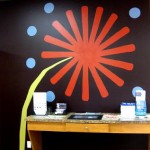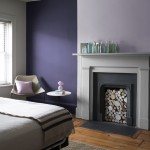 OK, Moms and Dads, has this ever happened to you? It’s happened to me a number of times, but the most recent took place a few Sunday’s ago. We were getting all 5 kids ready for 8:30 church one Sunday morning. And, of course, chaos ensued. However, eventually, because we’re such with-it parents, we managed to get everybody, including ourselves, ready.
OK, Moms and Dads, has this ever happened to you? It’s happened to me a number of times, but the most recent took place a few Sunday’s ago. We were getting all 5 kids ready for 8:30 church one Sunday morning. And, of course, chaos ensued. However, eventually, because we’re such with-it parents, we managed to get everybody, including ourselves, ready.
Breathing a sigh of relief, we started to make our way to the car, but before I did that, my youngest child–Hannah–came trudging over to me and explained that she needed a hug. Ahh, that’s so cute, isn’t it? Little kids who still love their dad so much they need a hug? So I scooped her up, and hugged her. And she returned the hug–big time–grabbing me tightly and then patting me repeatedly on the back with the overwhelming love only a child can give.
Well, when the hug was over, I ushered her out to the car and decided to give myself a quick once-over in the mirror–just to make sure I looked ok after the hectic morning. Well, after a glance, I realized I was as good as I was ever going to look and so I jumped into the van and drove to church.
When we got there, we talked to some people, found our seats–this time in the front row of the balcony rather than our normal seats in the back–listened to the service, talked to some people on the way out and eventually came home. However, changing out of my Sunday clothes and back into a t-shirt and jeans, I made a shocking discovery. The back of my shirt was completely covered with gooey, dirty, cheeto’s-ee orange hand prints. The front of the shirt was fine, but the back was filthy.
It only took me a second to put it together. Hannah had hugged me before we left and rather than patting me on the back out of sheer love–she was just using the back of my shirt as a wash rag. She cleaned her hands on my good Sunday shirt. And then I went to church and walked all around, sat in the front row, talked to all kinds of people–lived it up and had a big time–all the while with my back covered over with slime and assorted gunk.
That’s happened to my wife and I many different times. Sometimes it involves food, sometimes it’s from other things. But the point is this: we never catch it because we never think to check out our backs in the mirror. And that brings me to the paint point that’s hidden away in all of this– see, I never thought to look at my back in a mirror before I went to church–it never crossed my mind. I looked at myself in a mirror–at the front–to make sure I looked alright, but I never gave the back a second look. A lot of us do this same thing with our homes. Hang with me, here–this is profound–but you’ve got to hang in there.
See, we do this in our homes in this regard: We take good care of our front doors–our main entrances. These are the doors people typically see when they drive up or drive by our homes–so we take care (at least most of the time) and make these entrances visually pleasing. We use flowers, a great door color, little welcome mats . . . all kinds of little things to make the entrance way appealing.
So, we pay a lot of attention to the front–the main entrance. But you know what most of us completely forget? The garage.
Now, this seems like a leap in logic, but it’s not. See, the garage may be, in reality, the TRUE main entrance to our home. According to a recent US survey, “71% of American homeowners with a garage use the garage to enter their homes.” Another survey stated that “45% of homeowners with garages use their garages as the main entrance to their homes.”
What the numbers are saying is this: 71% of Americans who own garages use the garage to enter their own homes. 45% of Americans who own garages encourage all visitors to enter their homes through the garage.
And yet, even though the garage is used repeatedly as an entrance to our homes, it’s often the last place we really think to do any “decorating”. We put all our thought and effort into the front doors (and maybe even the garage door), but we don’t give a second though to the garage itself. It never crosses our minds.
It’s just like my shirt scenario at church–the front was pristine, but anybody watching me walk away realized I was like pig pen of Charlie Brown fame. I was a filthy mess.
So all that to ask a simple question: if folks enter your home through your garage, what kind of impression do they get? Is it a welcoming area?
And even if you’re garage is never used by guests, chances are your family enters the home–at least at times–through the garage. Shouldn’t you have a nice, respectable entrance into your home?
The answer, of course, since I’m selling paint, is YES–you should have a nice entrance in your garage. And the good news is, this doesn’t need to be an insanely expensive, complicated project.
THE BASIC STEPS
- WASH THE WALLS. If your walls are painted, go ahead and wash them with TSP (Trisodium Phosphate). This is a great “pre-painting” cleaner that cuts through dirt and grease and rinses clean away. If the walls are not painted, you might want to choose to use a shop vac and remove as much dust and dirt as you can.
- FILL THE GOUGES. After cleaning, go around the room with a good spackling compound. We recommend Crawford’s Spackling Paste. It’s a high quality spackle that’s easy to work with.
- DEGREASE the TROUBLE SPOTS. Most garages are going to have a couple areas where greasy handprints or smudges stain the walls. Before you paint, make sure you hit these spots with a specific degreaser. There are any number of these specialty products at RepcoLite–just stop in and we’ll direct you to the one that will work best.
- SPOT PRIME. If you have greasy smudges on your wall that you have to deal with (as in the above step), it wouldn’t hurt to spot prime those areas with BIN stain-blocking primer or RepcoLite’s own Zip Prime.
- APPLY YOUR FINISH. Once you’ve done all the prep work, it’s time to roll on your finish. We recommend a high quality acrylic latex. It doesn’t need to be an exterior product as most garage walls aren’t exposed to the elements. However, you would likely want to consider an Eggshell finish at the dullest and possibly even a Satin Sheen or a Semi-Gloss. The finishes with higher glosses will hold up longer and resist dirt and grime better than a flatter finish.
And there you go! It sounds like a lot of work (I know), but it’s not as complicated as it seems. Typically, you’ll find that the whole project will take only a single weekend.
 By Guest Writer, Shannon VandenBosch
By Guest Writer, Shannon VandenBosch


 OK, Moms and Dads, has this ever happened to you? It’s happened to me a number of times, but the most recent took place a few Sunday’s ago. We were getting all 5 kids ready for 8:30 church one Sunday morning. And, of course, chaos ensued. However, eventually, because we’re such with-it parents, we managed to get everybody, including ourselves, ready.
OK, Moms and Dads, has this ever happened to you? It’s happened to me a number of times, but the most recent took place a few Sunday’s ago. We were getting all 5 kids ready for 8:30 church one Sunday morning. And, of course, chaos ensued. However, eventually, because we’re such with-it parents, we managed to get everybody, including ourselves, ready.
 It’s been a while since we tossed up a “quick hitter” project–a project that should take you less than a couple hours and cost you less than $40–so I thought I’d pitch this one to you: painting an accent wall.
It’s been a while since we tossed up a “quick hitter” project–a project that should take you less than a couple hours and cost you less than $40–so I thought I’d pitch this one to you: painting an accent wall.


 hed, it’s time to create the handprint in the center. Now, this is not a difficult process, but there are a few things to know that will make your results turn out well. First, you’ve probably seen this done before (at school) where the handprint is “globby” and, well, for lack of a better word…ugly. The reason this happens is because kids usually mash their hands down on the paper while they’re covered with way, way, WAY too much paint.
hed, it’s time to create the handprint in the center. Now, this is not a difficult process, but there are a few things to know that will make your results turn out well. First, you’ve probably seen this done before (at school) where the handprint is “globby” and, well, for lack of a better word…ugly. The reason this happens is because kids usually mash their hands down on the paper while they’re covered with way, way, WAY too much paint.


 For the last couple posts, I’ve been recounting sad and potentially awkward moments that served to illustrate my broader “paint point.” See, by telling you all about my pie making fiasco or my scooter-building screw up, I tried to convey the importance of following a recipe or a set of instructions.
For the last couple posts, I’ve been recounting sad and potentially awkward moments that served to illustrate my broader “paint point.” See, by telling you all about my pie making fiasco or my scooter-building screw up, I tried to convey the importance of following a recipe or a set of instructions.